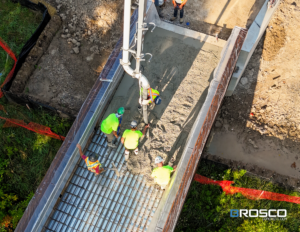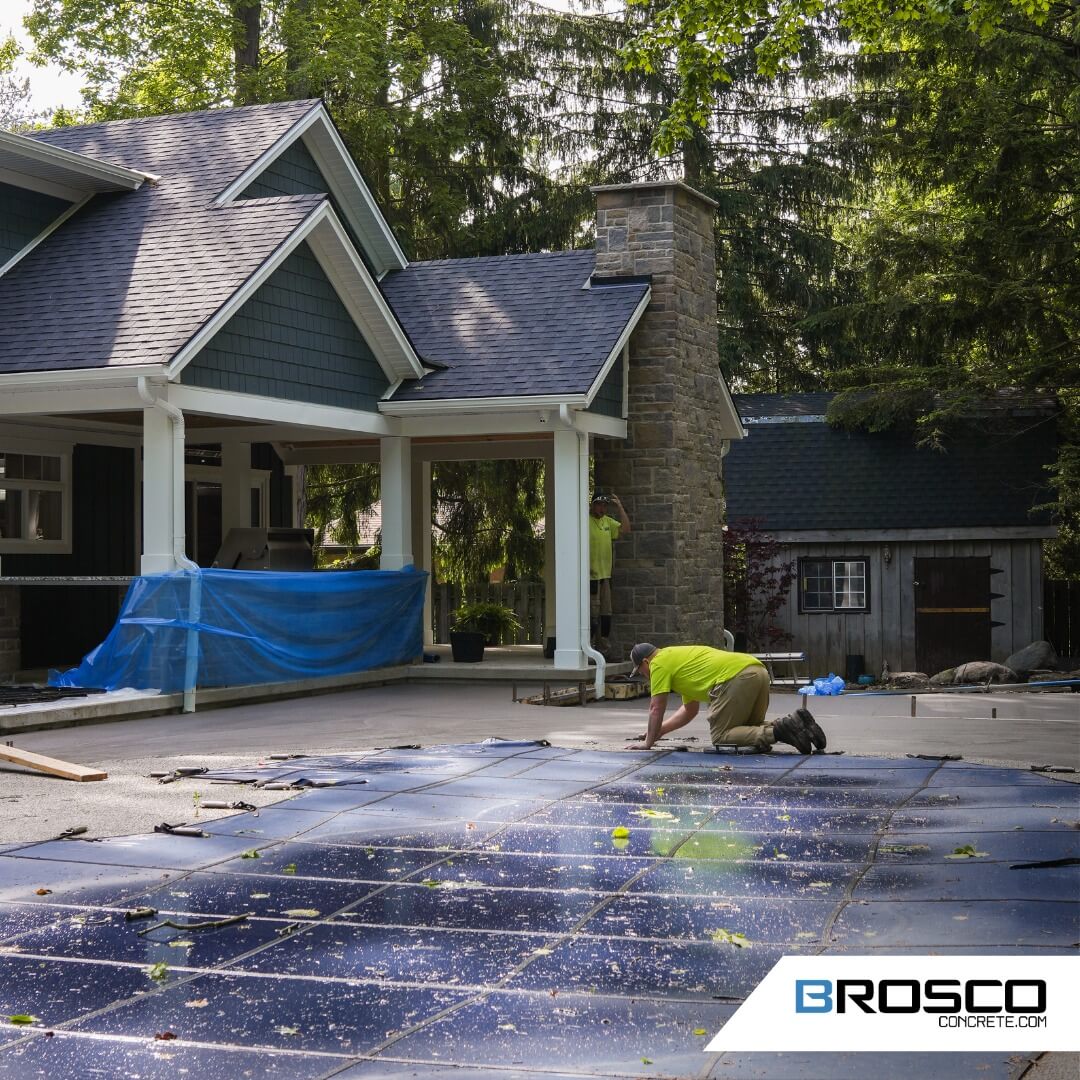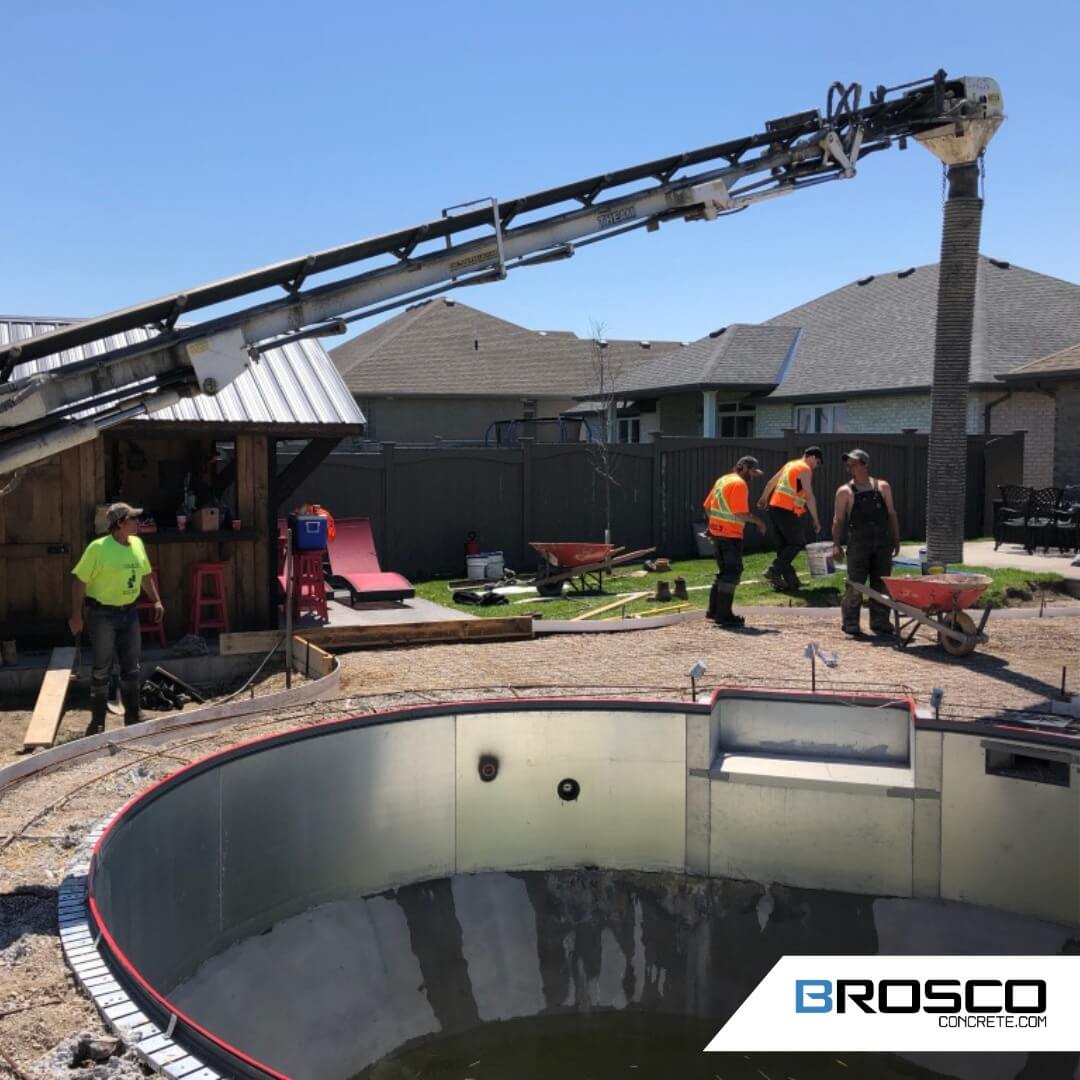Can You Pour Concrete In Cold Weather?
Can you pour concrete in cold weather?
What temperature is too cold to pour concrete?
How hot is too hot to pour concrete?
While you can do this during either hot or cold weather, these questions are extremely valid when deciding when to pour the concrete for your project. These are just among the many things to consider to ensure your concrete sets properly and within your timeline.
In this article, we’ll answer these questions and find out the differences between concrete pouring in hot weather vs. cold weather, so you can make an informed decision moving forward. We’ll also tap into the helpful tips for concrete pouring to achieve optimal results.
The process of concrete pouring
Concrete can be used for a variety of purposes. It can be laid for your home foundation, deck, driveway, walkways, parking lot, basement, and more. It’s important to have the guidance of a trustworthy concrete finishing and leveling company as the way concrete was poured can make or break your home.
The process of concrete pouring includes the following steps:
- Preparing the site.
- Creating sub-base.
- Setting the form.
- Pouring the concrete.
- Smoothing the concrete.
- Finishing touches.
- Curing.
Each step is critical to the success of your project. However, no matter how laid out your plans are, pouring concrete still has its pros and cons depending on the weather conditions. Not only that you need to consider the temperature when you pour the concrete, but also how you can keep the correct temperature of the concrete until it cures.
During the cold season, concrete contractors may use heated enclosures or insulated blankets to help the concrete cure faster. On the other hand, when it’s extremely warm, they use a misting system, concrete cooler, sunshades, windbreaks, and significant manpower when pouring concrete in hot weather.
In the next session, let’s dive deeper into the proper procedures when pouring concrete in hot weather and cold weather, the correct temperature ranges, and some helpful tips for helping your concrete cure faster regardless of the weather condition.
Correct temperature for pouring concrete in Canadian weather
According to an article published by a UK construction technology company, the best temperature for pouring concrete is between 10°C (50°F) and 21°C (70°F).
Minimum temperature to pour concrete. The said article suggests that it’s highly recommended to avoid pouring concrete in winter when the temperature falls below 4°C (40°F). The American Concrete Institute defines cold weather concreting as “a period when for more than three successive days the average daily air temperature drops below 40 degrees Fahrenheit and stays below 50 degrees Fahrenheit for more than one-half of any 24-hour period.”
At this point, it takes a significantly longer time to cure concrete, which may lead to a weaker structure. That is because the chemical reaction that’s supposed to strengthen the concrete now slows down. Moreover, if it’s below freezing temperature, the water in the concrete freezes faster and then expands, leading to cracks.
Pouring concrete in the winter is highly feasible if it’s indoors and your contractor ensures everything is climate-controlled. Other than that, it’s better to postpone your concrete project when the season warms up to avoid unnecessary costs on equipment and labor, possible delays, and curing issues.
Maximum temperature to pour concrete. It’s not just the coldness that you need to take into account. There are also challenges that can arise with hot weather, defined by American
Concrete Institute as “ambient temperatures above 90 °F, including low humidity and high wind speeds.”
Pouring concrete in hot weather above 32°C (90°F) is definitely feasible with the help of a reliable concrete contractor near you. A hot and dry concrete pour requires extra care, as the elements can speed up curing, causing water to evaporate quickly. However, with the right precautions and concrete experts’ supervision, you can ensure your concrete stays well-hydrated, reducing the risk of cracks, shrinkage, and future structural issues.
- How to lessen the impact? In cases like this, mixing cold water into the concrete mix is recommended, as well as moving the pouring process during cooler hours of the day to avoid future concrete problems.
Top tips when pouring concrete in cooler weather
Freezing temperatures can damage or delay the curing process. That’s why winter concrete pours are best done indoors where you can control the temperature. In colder conditions, follow these tips to overcome the challenges of pouring concrete in low temperatures.
- Preheat one or more constituent materials (water and aggregate) to ensure that the proper temperature is present during the concrete pouring process.
- On-site mixing of small amounts of concrete can be done with hot water or keeping the materials in a warm indoor space.
- In cold temperatures, adjust mixed components, like increasing the ratio of cement using chemical admixture.
- Use windbreaks to help protect your concrete and the workers from winds that can cause abrupt temperature changes.
- Use heated enclosures and insulated blankets for added protection and heat until the concrete cures
- ACI Committee 308 suggests the following minimum curing periods:
- ASTM C 150 Type I cement, 7 days
- ASTM C 150 Type II cement, 10 days
- ASTM C 150 Type III cement, 3 days
- ASTM C 150 Type IV or V cement, 14 days
- ASTM C 595, C 845, C 1157 cements, variable
Top tips when pouring concrete in hot weather
- Always shade your concrete pour area to avoid direct sunlight.
- Try to avoid pouring concrete during the hottest time of the day.
- Use retarding admixtures to help complete the chemical reaction necessary for proper concrete curing.
- Store your raw materials in a cooler location before mixing.
- Add cold water or ice to the mixture to help cool down the temperature of the concrete.
- Produce concrete on site with a volumetric mixer or prepare a ready-mix plant nearby to reduce the impact of heat.
- Make sure you have enough manpower throughout the process; mixing, pouring, and curing.
Finding the best temperature for pouring concrete
- Monitor your local weather forecasts. Always keep an eye on your local weather forecast so you get better chances of proper concrete curing at the right temperature.
- Check the best time of day for concrete pour. During summer, try to schedule your concrete pour during the cooler hours of the day, like early morning or late afternoon.
- Consider the seasons. In Canada, it gets pretty hot in the summer and extremely cold in the winter. With the help of a good concrete company, you can utilize the hot summer days to start your concrete projects. Spring and fall are the next ideal options, where temperatures are more tolerable for outdoor labor. Nevertheless, ensure your concrete contractor gives extra care and knows what to prepare in varied weather conditions.
- Be flexible when changes happen. If your concrete company in London suggests a delay, trust that they’re doing it for the better. Delays often cause frustrations but keep in mind that it’s better to be late than have issues sooner or later.
Brosco Concrete can help…
Brosco Concrete is a concrete company in London, Ontario, specializing in concrete pouring, leveling, raising, decorative finishing, and more. Get the best advice, solutions, and concrete services from our concrete experts who are ready to help you. Contact Brosco Concrete today!
If you want to learn more about proper concrete maintenance and repairs, here are some recommended articles for you:

















